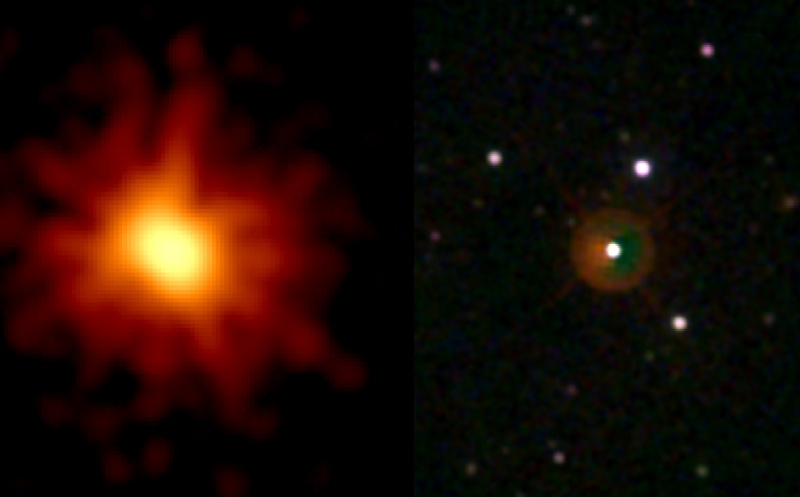Explanation: How far can you see? Even the faintest stars visible to the eye are merely hundreds or thousands of light-years distant, all well within our own Milky Way Galaxy. Of course, if you know where to look you can also spot the Andromeda Galaxy as a pale, fuzzy cloud, around 2.5 million light-years away. But staring toward the northern constellation Bootes on March 19th, even without binoculars or telescope you still could have witnessed a faint, brief, flash of light from a gamma-ray burst. The source of that burst has been discovered to lie over halfway across the Universe at a distance of about 7.5 billion light-years. Now holding the distinction of the most distant object that could be seen by the unaided eye and the intrinsically brightest object ever detected, the cosmic explosion is estimated to have been over 2.5 million times more luminous than the brightest known supernova. The monster burst was identified and located by the orbiting Swift satellite, enabling rapid distance measurements and follow-up observations by large ground-based telescopes. The fading afterglow of the gamma-ray burster, cataloged as GRB080319B, is shown in these two panels in X-rays (left) and ultraviolet light (right).
1999 2000 2001 2002 2003 2004 2005 2006 2007 2008 2009 2010 2011 2012 2013 2014 2015 2016 2017 2018 2019 2020 2021 2022 2023 2024 2025 |
Yanvar' Fevral' Mart Aprel' Mai Iyun' Iyul' Avgust Sentyabr' Oktyabr' Noyabr' Dekabr' |
NASA Web Site Statements, Warnings, and Disclaimers
NASA Official: Jay Norris. Specific rights apply.
A service of: LHEA at NASA / GSFC
& Michigan Tech. U.
|
Publikacii s klyuchevymi slovami:
gamma-ray burst - gamma-vspleski
Publikacii so slovami: gamma-ray burst - gamma-vspleski | |
Sm. takzhe:
Vse publikacii na tu zhe temu >> | |
